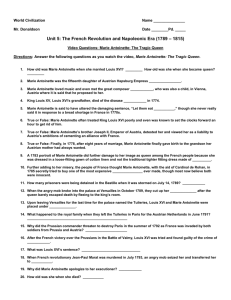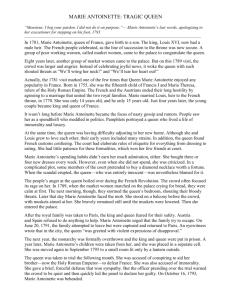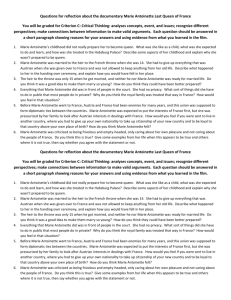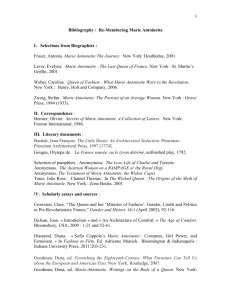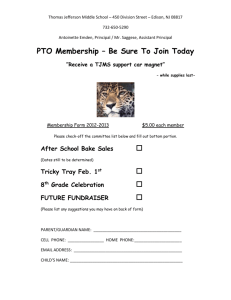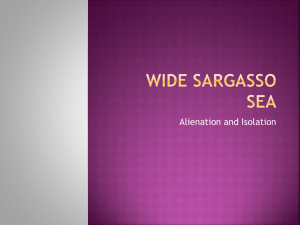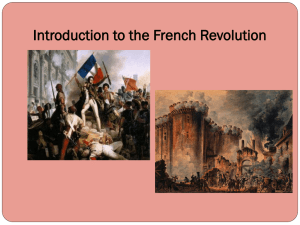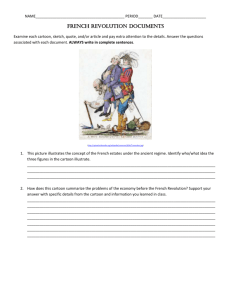Course Description
advertisement
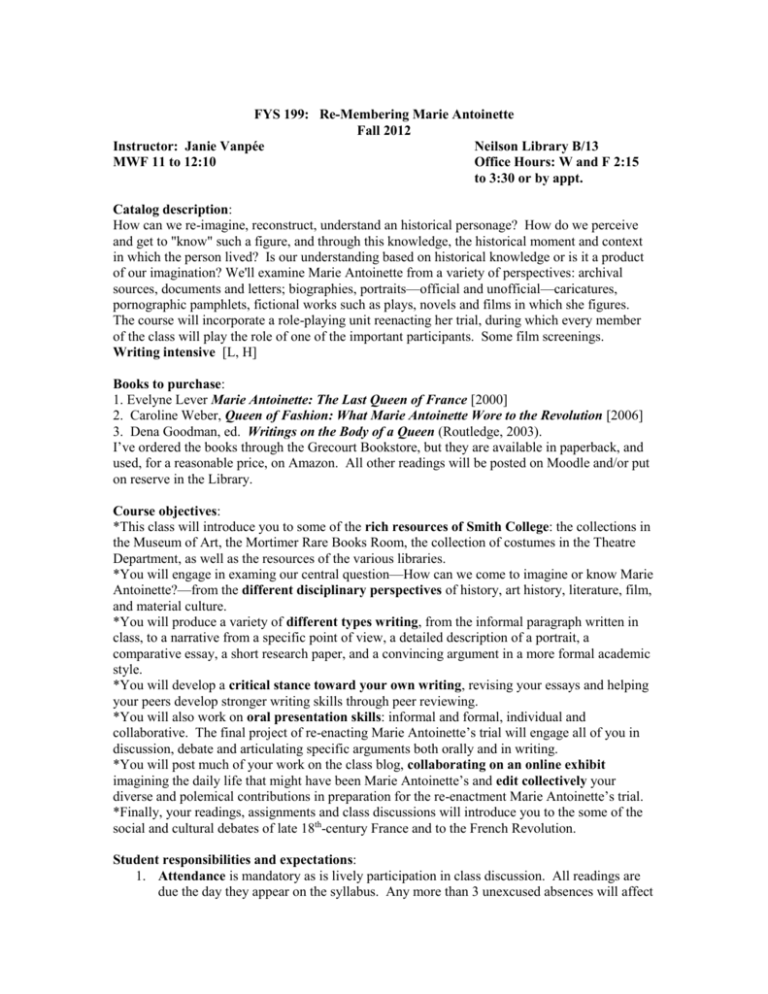
FYS 199: Re-Membering Marie Antoinette Fall 2012 Instructor: Janie Vanpée Neilson Library B/13 MWF 11 to 12:10 Office Hours: W and F 2:15 to 3:30 or by appt. Catalog description: How can we re-imagine, reconstruct, understand an historical personage? How do we perceive and get to "know" such a figure, and through this knowledge, the historical moment and context in which the person lived? Is our understanding based on historical knowledge or is it a product of our imagination? We'll examine Marie Antoinette from a variety of perspectives: archival sources, documents and letters; biographies, portraits—official and unofficial—caricatures, pornographic pamphlets, fictional works such as plays, novels and films in which she figures. The course will incorporate a role-playing unit reenacting her trial, during which every member of the class will play the role of one of the important participants. Some film screenings. Writing intensive [L, H] Books to purchase: 1. Evelyne Lever Marie Antoinette: The Last Queen of France [2000] 2. Caroline Weber, Queen of Fashion: What Marie Antoinette Wore to the Revolution [2006] 3. Dena Goodman, ed. Writings on the Body of a Queen (Routledge, 2003). I’ve ordered the books through the Grecourt Bookstore, but they are available in paperback, and used, for a reasonable price, on Amazon. All other readings will be posted on Moodle and/or put on reserve in the Library. Course objectives: *This class will introduce you to some of the rich resources of Smith College: the collections in the Museum of Art, the Mortimer Rare Books Room, the collection of costumes in the Theatre Department, as well as the resources of the various libraries. *You will engage in examing our central question—How can we come to imagine or know Marie Antoinette?—from the different disciplinary perspectives of history, art history, literature, film, and material culture. *You will produce a variety of different types writing, from the informal paragraph written in class, to a narrative from a specific point of view, a detailed description of a portrait, a comparative essay, a short research paper, and a convincing argument in a more formal academic style. *You will develop a critical stance toward your own writing, revising your essays and helping your peers develop stronger writing skills through peer reviewing. *You will also work on oral presentation skills: informal and formal, individual and collaborative. The final project of re-enacting Marie Antoinette’s trial will engage all of you in discussion, debate and articulating specific arguments both orally and in writing. *You will post much of your work on the class blog, collaborating on an online exhibit imagining the daily life that might have been Marie Antoinette’s and edit collectively your diverse and polemical contributions in preparation for the re-enactment Marie Antoinette’s trial. *Finally, your readings, assignments and class discussions will introduce you to the some of the social and cultural debates of late 18th-century France and to the French Revolution. Student responsibilities and expectations: 1. Attendance is mandatory as is lively participation in class discussion. All readings are due the day they appear on the syllabus. Any more than 3 unexcused absences will affect your final grade. Cell phones should be turned off and there should never by any texting of any kind going in the class. You may use your computers in class, but only to refer to materials relevant to the class work and discussion. 2. Class preparation: Each student is responsible for having done the readings for the day. Being prepared also means having useful comments and observations to make or questions to ask. High grades are awarded for those students who “move the discussion forward.” 3. Late work: All work that is handed in after the due date is subject to a lower grade. 2 I. From Facts to History Friday September 7: Introduction to the course and to Marie Antoinette 1. Objectives of the course 2. What do we know of Marie Antoinette? 3. Facts, history or imagination? Writing assignment #1 for Monday 9/10: First impressions: choose one of the portraits of Marie Antoinette (on Wordpress, the class blog available on Moodle; enter your Novel name and password to access the blog.) and describe the person depicted, as if you were meeting her for the first time. Here are some of the questions you might want to ask as you study the portrait: What does her demeanor, costume, pose suggest about her? How does the portrait convey character, age, disposition, outlook on life? How does her portrayal make you feel? One page, typed double-spaced [250 words]. Week I: Familiarizing ourselves with the facts Monday, September 10: Exploring library resources Library research: Meeting with Bruce Sadjak, electronic classroom, Neilson Library 1. What do available reference sources tell us about Marie Antoinette? 2. What are the facts? Assignment for 9/12: Build a time line of Marie Antoinette’s life, identifying 10 to 15 moments in her life or the period she lived in that you think were significant for her and from her perspective. Be sure to include accurate references to your bibliography, using the MLA style. Wednesday, September 12: Compressing a life into a timeline 1. Comparing timelines 2. Identifying turning points and how to interpret them: What are the turning points in a life? In Marie Antoinette’s life? What does it mean to identify important moments in the trajectory of a life? What control does Marie Antoinette have over the events in her life? How does the individual fit into or with historical events? Friday, September 14: In class film viewing 1. Film: Marie Antoinette, first half, David Grubin, 2006 (60 minutes) 2. Sign up for individual or group writing conferences to review portrait assignment Assignment for 9/14: Read the timeline provided on the website at http://www.pbs.org/marieantoinette/interviews/index.html Discussion forum on Moodle forum #1: Pick three historical events or moments that you think had the greatest impact on Marie Antoinette’s personal life and explain why you chose them. Were these moments or events public or private? Do these events differ from the moments you chose for your own timeline of Marie Antoinette? Weeks II: Turning facts into the story of a life Over the course of the semester you will read Evelyne Lever’s biography of Marie Antoinette as well as most of Caroline Weber’s interpretation of Marie Antoinette’s life. We will at times compare these two biographical perspectives with chapters from two of Marie Antoinette’s most 3 illustrious biographers, Stefan Zweig [1933] and Antonia Fraser [2001], especially in the following two weeks. Monday, September 17: Comparing opening chapters from three biographies Quiz: facts and dates Discussion 1. What story does a table of contents tell? 2. Same facts, three stories Readings for 9/17: Opening chapters from Evelyne Lever’s 2000 Marie Antoinette: Last Queen of France, “Daughter of Maria Theresa,” and “Great Expectations,” pp. 3-19; Stefan Zweig’s 1933 Marie Antoinette: The Portrait of an Average Woman, “A Child Marriage,” [Moodle]; and Caroline Weber’s 2006 Queen of Fashion: What Marie Antoinette Wore to the Revolution, “Pandora’s Box.” Wednesday, September 19: Marriage as diplomacy 1. Biographers’ perspectives 2. Discussion comparing how two biographers fashion a story out of the same facts and materials: Marie Antoinette’s marriage Readings for 9/19: Antonia Fraser, “France’s Happiness,” pp. 57-71 [Moodle]; and Caroline Weber, “Stripped,” pp. 24-46, Friday, September 21 : The body as symbol 1. Discussion: the struggle to possess Marie Antoinette’s body Readings for 9/21: Stefan Zweig “Secret of the Alcove,” and “Debut at Versailles,” pp. 20-41 [on Moodle] and Caroline Weber, “Corseted,” pp. 47-74 and “Ride Like a Man,” pp. 75-93. Writing assignment #2 for 9/24: Write a letter as Marie Antoinette to your sister in Vienna about your first months in France. Your letter should reflect what you have learned from your readings about Marie Antoinette’s character, her education, her social relations, her age, the customs of the French court. Be sure to date your letter thereby guiding your, that is Marie Antoinette’s, perspective on the events, characters, situations you describe. [500 to 750 words or 2 to 3 pages] Week IV: One life, multiple biographers—different stories Monday, September 24: Court etiquette and intrigue Discussion and comparison of Marie Antoinette’s introduction to court life at Versailles and the controversies she encounters Readings for 9/24: Fraser, “Strange Behaviour,” pp. 91-103 and Zweig, “Fight for a Word,” pp. 42-58, both on Moodle. Wednesday, September 26: How to read a portrait Discussion of four 18th-century portraits in the Smith College Museum of Art We will meet as a group in the Museum foyer and then proceed as a group to the Museum’s second floor gallery. Friday, September 28: The Royal couple 1. In-class workshop for WordPress We will meet in the electronic classroom, Seeyle 401. 2. Analyzing portraits of King Louis XVI and Queen Marie Antoinette using Stefan 4 Zweig’s insights. Readings for 9/28: Zweig, “Portrait of a Royal Couple,” pp. 76-88 and “Queen of Rococo,” pp. 89-103; and Lever, “Venus and Vulcan,” pp. 86-94 and “The Queen’s Intrigues,” pp. 95-103. Writing assignment #3 for Monday, October 1: Re-write you first “impressions” paper, refining your analysis of the portrait you chose with the new information you have discovered about Marie Antoinette and applying what you’ve learned about how to look at a portrait in Wednesday’s class. Set the portrait in Marie-Antoinette’s timeline and reflect upon how the historical context might affect the portrayal. Week IV: Primary sources: What do the documents reveal? How to make documents tell a story Monday, October 1: An unusual mother-daughter relation 1. How to read a letter: Empress Maria Theresa’s first “letter” and instructions 2. Guiding or spying: A three-way correspondence Readings for 10/1: Selections of letters from Marie Antoinette’s correspondence with her mother Empress Marie-Theresa, from 21 April 1770 to 9 June 1771, from Olivier Bernier, Secrets of Marie Antoinette, pp. 31-66 [Moodle]. Read and study the handout, Working with Sources, paying particular attention to the rubrics primary sources. Wednesday, October 3: The personal is political 1. Pressure from the Empress: sex, reputation, and Austrian interests 2. Marie Antoinette’s strategies of response Readings 10/3: Selections of correspondence from 8 May 1774 to 16 June 1774, pp. 127-143; and 18 March 1777 to 19 April 1778, pp. 213 -246 [Moodle]; and Evelyne Lever, “Motherhood,” “Fersen,” “Queen of Trianon,” and “Birth of a Dauphin,” pp. 113-146. Friday, October 5: Virtual visit to Versailles @ http://en.chateauversailles.fr/homepage 1. How to describe space 2. Comparing public and private apartements 3. Comparing the gardens of Le Nôtre and Mique Readings for 10/5: Joan DeJean, “Introduction,”pp. 1-21 and selections from “An Architecture of Comfort,”pp. 52-6, in The Age of Comfort, on Moodle. Writing assignment #4 for Oct. 10: Compare the space and decor between the Queen’s large and small apartments or between her apartments in the Palace and Trianon and how they might shape public and private space. (750 words or 3 pages). To help you reflect and reference your observations, refer to the selections from Joan DeJean’s The Age of Comfort. Advance in your reading of Evelyne Lever’s biography, Chapters 18 to 20, pp.147-172. II. Material Culture: Things, Places, Spaces During the five weeks of this unit and the following one, we will return to the Museum and the Cunningham Gallery of Prints to focus on a series of eighteenth century engravings, JeanMichel Moreau le Jeune’s Monument du costume [1789]. We will explore the scenes and stories that the prints suggest and then focus on the objects, spaces, clothing and activities represented in the scenes. We will visit the Mortimer Rare Books Room to look at the engravings of Diderot’s 5 and d’Alembert’s Encyclopédie, which feature the luxury objects in Moreau’s Le Monument du Costume and the crafts that produce them [architecture, interior design, garden design, clothing, equestrian sports, fencing, musical instruments, objects of daily use]. Collectively, we will organize a virtual online exhibit exploring the use of such objects, how they are affect the postures, attitudes and activities of the figures in the prints from the Monument du Costume, and how, by inference, such objects might have shaped or inflected the daily life of Marie Antoinette. Weeks V and VI: Representing the art of living in eighteenth-century France Wednesday, October 10: Imagining Marie Antoinette’s daily life 1. Marie Antoinette’s physical surroundings through prints and engravings Jean-Michel Moreau le Jeune’s Monument du Costume [1789] 2. What does this series of prints show of life in eighteenth-century France? What constitutes private life? What activities pertain to public life? Where do private and public domains mix? 3. How many stories do the prints tell? How could we group or order the prints? Class will meet in the foyer of the museum and then proceed as a group to the Cunningham Gallery on the second floor of the Museum. Assignment # 5: Oral presentation assignment for 10/15: With a partner choose one of the prints and analyze how the space and furniture mold, influence or frame the activities and characters represented within it, taking Mimi Hellman’s essay as a guide and reference point. Be prepared to present your print orally in class on Monday (5 minutes max). Consult the guidelines for oral presentations on Moodle. The Monument du Costume prints of Moreau le Jeune will be available for your study at the Cunningham Gallery on Friday, October 14 from 2 to 4. Friday, October 12 Analyzing one print through the prism of Mimi Hellman’s essay. Class will meet in the foyer of the museum and then proceed as a group to the Cunningham Gallery of the Museum. You will work independently with your partner to develop your analysis and oral presentation of one of the prints. I will be there for guidance and consultation. Readings for 10/12: Mimi Hellman, « Interior Motives : Seduction by Decoration in EighteenthCentury France, » in Harold Koda and Andrew Bolton, Dangerous Liaisons : Fashion, Furniture in Eighteenth-Century France, and « Of Water and Chocolate, » Gastronomica : The Journal of Food and Culture, Vol. 4 (Fall 2004) : 9-11, both on Moodle. Both of these short essays should serve as models for your own exploration of your print and the oral presentation you will make on Monday. Forum #2: What stories do the prints of the Monument du Costume tell?: After observing the prints in class on Wednesday, choose 3 to 5 that you think go together to tell a “story” and tell the story. You may see ways to cluster the prints around activities, gender, times of day, times of life, or more abstract classfications. Monday, October 15 Oral presentations of Jean-Michel Moreau le Jeune’s Monument du Costume [1789] Class will meet in the Museum foyer and than proceed together to the Cunningham Gallery on the second floor of the Museum. 6 Wednesday, October 17 The trades and crafts of luxury goods in Diderot and d’Alembert’s Encyclopédie 1751-72 Class will meet in the Mortimer Rare Book room, third floor of Neilson Library. Assignment for Monday 10/22 posted on the Moodle forum #3: A one-page brief or outline of your choices for the online exhibit. First, choose a print of the Monument du Costume series and analyze how private and public life intersect in its scene. Second, select an object featured in the print (examples: a piece of furniture—desk, sofa, chair, bed; a space indoors or outdoors; an item of clothing—wig, gloves, feather, silk, stockings, embroidery or lace; a decorative item—fabric on wall, parquet or rugs on floor, paintings, moldings on walls, mirrors, sculpture or porcelain container; useful object—porcelain cup, writing implements, sewing tools, musical instrument, playing cards). During the next two weeks you will research the craft and labor behind the making of the object in the Encyclopédie and you will analyze how the object reflects and or affects the activies and life of the characters represented in the scene you are focusing on. As you choose both the print[s] and the object featured in it/them, you can consult the prints online in the Gallery Monument du Costume on our class blog and the Encyclopedia plates online or in the Rare Books room. I encourage you also to revisit the Cunningham Print room to study your print[s] in detail during the next two weeks. You will need to make an appointment with the curator, Henriette Kets de Vries [hketsdev@smith.edu] and let her know which print[s] you will want to look at. Friday, October 19: Luxury and rising consumerism 1. The debate about luxury 2. Objects of leisure 3. The labor behind the leisure Readings for 10/19: LUXURY, CHOCOLATE, TAILOR of suits, DOMESTICS, SLAVE TRADE and selection of articles and plates from the Encyclopédie available on the Encyclopedia Collaborative Translation Project website [Moodle]. Week VII: The Body Monday, October 22: The economics and politics of fashion 1. Marie Antoinette’s role in creating fashion and consumerism 2. Economic and moral “credit” 3. Video clip from opening scenes of Stephen Frear’s Dangerous Liaisons Readings for 10/22: Clare Crowston, “The Queen and her ‘Minister of Fashion’: Gender, Credit and Politics in Pre-Revolutionary France,” Gender and History 14:1 (April 2002), 92-116; and Desmond Hosford, “The Queen’s Hair: Marie-Antoinette, Politics and DNA,” EighteenthCentury Studies 38.1 (2004), pp. 183-200 [both on Moodle]. Wednesday, October 24: Shaping the body Fashion and clothing in the late 18th century: a hands-on talk by Kiki Smith, costume designer and Professor of Theatre. We will meet in the dressing room across the hall from the Costume Shop in the basement of the Theatre building. Take the elevator in the lobby near the studio theatre and to down one flight. Readings for 10/24: In preparation for our hands-on visit to the Smith Theatre Costume Collection and our workshop with Professor Smith, read Caroline Weber, “The Pouf Ascendant,” from Queen of Fashion, pp. 94-130; and consult the Metropolitan Museum online exhibit of 18thcentury French fashion at http://www.metmuseum.org/special/Dangerous_Liaisons/fashion_images.htm 7 and an exhibit on court dress, Château de Versailles, March 2009 at http://fastesdecour.chateauversailles.fr/index_en.html#/en/exposition Friday, October 26: Workshop session in the Cunningham Gallery of the Museum You will work on analyzing your Monument du Costume print[s], and the object in the print[s] you will have identified from the Encyclopédie. This will be a time to look at all the prints again; to see if the object you are focusing on reappears in other prints and if so how; to refine your observations and analysis; and to ask questions. We will meet as a group in the Museum foyer and proceed together to the Cunningham Gallery. Assignment for Friday, November 2 to post on Moodle forum #4: Develop a short bibliography of references that you will consult or have consulted to give greater authority to your wall legend for the exhibit; be sure to include the references to the prints from the Monument du Costume and the plates and articles from the Encyclopedia. Consult the Guide to Writing Papers, pp. 60 to 80 for examples of the form to follow for citations and bibliographies. Use the MLA style [on Moodle]. Week VIII: The Body in public and private space Monday, October 29: Escape to Trianon 1. Creating a private space for a private life: Trianon and le Hameau 2. Simplicity by design Readings for 10/31: Caroline Weber, “The Simple Life,” from Queen of Fashion, pp. 131-163 and Evelyne Lever, “Fersen’s Return,” pp. 147-154; revisit the Versailles website and tour Trianon and the Queen’s estate: http://en.chateauversailles.fr/homepage Wednesday, October 31: The vogue for private retreats 1. Comparing Trianon to Bastide’s The Little House 2. Seduction by design Reading for 10/31: Jean-François de Bastide, The Little House: An Architectural Seduction, [1774] translated from the French [Moodle]. Friday, November 2: In class workshop 1. Editing and revising text for online exhibit 2. Adding images and legends 3. Adding bibliography Writing assignment #6 for 11/5: Finalize writing the “wall legend” describing and explaining the object you have researched and its use and integration in one or more prints from the Monument and post it along with images and bibliography on the class blog. Sunday, November 4: Masquerade Tea Sweets, Delicacies and “Champagne” Games of chance 4 to 5:30 chez the Marquise Janie van Pée Keeper of the sacred memory of HRH Queen Marie Antoinette 8 III. Conflicting Images of an Evolving Myth Week IX : Scandals Monday, November 5: Royal portraiture 1. Marie Antoinette “en chemise” 2. Image control Readings for 11/5: Mary D. Sheriff, “The Portrait of the Queen,” in Dena Goodman, Marie- Antoinette: Writings on the Body of the Queen, pp. 45-7; and Gita May, “Mary Antoinette’s Portraitist,” from Elisabeth Vigée Le Brun: The Odyssey of an Artist in the Age of Revolution pp. 37-47 [electronic source on Moodle]. Wednesday, November 7: Impersonating the Queen Readings for 11/7: Lever, “The Diamond Necklace Affair,” pp. 173-182; and Sarah Maza, “The Diamond Necklace Affair Revisted,” in Dena Goodman, Marie- Antoinette: Writings on the Body of the Queen, pp. 73-94. Friday, November 9: Sex and politics Defiling the myth of the Queen: The caricatures and pamphlets Readings for 11/9: “The Love Lives of Charlie and Toinette,” and “The Austrian Woman on the RAMPAGE, or the Royal Orgy” [Moodle]; and “How to read an image,” under the rubric Explore on the website, Liberty, Equality, Fraternity: Exploring the French Revolution: http://chnm.gmu.edu/revolution/. Monday, November 12: Sex and politics, 2 Whose identity? Losing control of the battle of images Readings for 11/12: Pierre Saint-Amand, “Terrorizing Marie Antoinette.” In Dena Goodman, Marie-Antoinette. Writings on the Body of a Queen, pp. 253-272; and Jacques Revel, “MarieAntoinette in Her Fictions: The Staging of Hatred,” from Fictions of the French Revolution, ed. Bernadette Fort, pp 111-129 [Moodle]. Week X: Marie Antoinette on stage and at the movies Wednesday, November 14: Staging the Queen 1. Olympe de Gouges’s appeal to the Queen 2. Confronting the Queen on stage Readings for 11/14: Olympe de Gouges, unfinished play [1792], France Saved, or the Vanquished Tyrant; and Declaration of the Rights of Woman, 1792, addressed to the Queen, both on Moodle. Thursday, November 15, 7 pm, location to be announced Film viewing: Marie Antoinette (MGM, 1938 with Norma Shearer) Friday, November 16: History a la Hollywood 1. How does Hollywood “do” history? 9 2. Interpreting Marie Antoinette through the lens of American gender Reading for 11/16: Laura Mason, “’We’re Just Little People, Louis’: Marie Antoinette on Film,” In Dena Goodman, Writings on the Body of a Queen, pp. 239-251. For Monday, 11/19: See Sofia Coppola’s 2006 Marie Antoinette. On reserve in Neilson Lib. Monday, November 19: Marie Antoinette and popular culture 1. Discussion and comparison of Sophia Coppola’s film and the MGM 1938 version of Marie Antoinette. 2. The Marie Antoinette “effect” Reading for 11/19: Jennifer Millam, « Imagining Marie Antoinette : Cultural Memory, Coolness and the Deconstruction of History in Cinema, » French History and Civilization. Papers from the George Rudé Seminar, 4, 2011 @ <http://www.hfrance.net/rude/rudevoliv/TrompfVol4.pdf [Moodle] Writing assignment #7 due 11/20: Write a critical analysis comparing the two films: how does each film inflect the story of Marie Antoinette’s life from its own historical perspective? [750 to 1000 words or three to four pages] Over Thanksgiving Break, finish reading the remaining chapters Lever, Marie Antoinette: The Last Queen of France, pp. 223-305. IV. In Her Shoes The last three weeks will be spent preparing for the reenactment of Marie Antoinette’s trial. You will take on the roles of various historical characters and represent their perspectives on the Queen, first in written contributions to “contemporary” newspapers or letters “home” or to their constituents, then in debate with those who hold conflicting perspectives. Weeks XI, XII and XIII: The widow Capet on trial Monday, November 26 1. Perspectives on the Revolution 2. Launching the reenactment: assigning roles and establishing the rules of the reenactment; what are the factions; what newspapers represent the factions; who will be the editors responsible for publication of the players’ opinions and positions. Assignment for Friday, November 30: research your player’s identity and write a two-page autobiography and explaining why you are in Paris at this moment of the Revolution (late summer 1793). Get into your player’s mind! Wednesday, November 28 Film: Second half of Marie Antoinette, David Grubin, 2006; and online interviews with Simon Schama and Antonia Fraser at http://www.pbs.org/marieantoinette/interviews/index.html Friday, November 30: Salons and Clubs Players will circulate in Paris to the various salons and clubs where the fate of Veuve Capet is being discussed. Listen to what others are saying; speak you own mind. Begin to identify players with whom you can forge alliances. 10 Writing Assignment #8 for Monday, 12/3: *Each player will write a 2 page position paper accusing or defending Marie Antoinette from their perspective to be “published” or circulated in the “newspaper” or broadsheet which represents their political position. Your position paper will be based on sources and references you have read during the semester and research you will have done to supplement your knowledge of your player’s views. Consult the website, Liberty, Equality, Fraternity: Exploring the French Revolution: http://chnm.gmu.edu/revolution/. Monday, December 3: Publishing frenzy In class: Players will submit clean copies of their position papers to the editors (and their editorial committee) of the different papers who will review the submissions, edit and “publish” a special edition of their paper. [Peer reviewing assignment] Assignment for Wednesday, 12/5: Editors and their committees will “publish” their paper online and “distribute” to the public. The “public” (every player in the class) will read the papers and be prepared to respond to those who hold opposing views. Wednesday, December 5: Debate in the General Assembly 1. Should the widow Capet be put on trial? 2. If so, what should be the accusations? 3. Who should be her defense lawyer[s]? Players should come prepared to articulate their position AND argue against the viewpoints of their opponents. Friday, December 7: Alliances and oppositions Players will forge alliances with those participants who most closely represent the same perspective. Groups will work together to develop a group position either defending or accusing Marie Antoinette at her upcoming trial. Groups may differ on the arguments they may want to advance in defense or in accusation of the former Queen. Readings for 12/7: Trial of Marie Antoinette, late Queen of France, before the Revolutionary Tribunal at Paris [electronic resource on ECCO (Eighteenth Century Collections Online) available through the library.] Writing assignment #9 for Monday, 12/10: *Each player will write a brief persuading another player with a different perspective on Marie Antoinette, the monarchy and the French Revolution to join her “faction” or group. [two pages] Monday, December 10: The Trial of the widow Capet The trial will be open to the public and all citizens will be allowed to speak. Affinity groups should have organized themselves so that each member of the group has a clear point to make in defense or in acusation of Widow Capet. Final writing Assignment #10, due Wed, 12/19 by 5pm: In your final paper, you will take the position of impartial judge reviewing the various arguments for and against Marie Antoinette’s condemnation. You will include specific references to sources and texts to strengthen your argument and final judgment. You may build on previous papers and arguments you’ve made earlier in the game as well as on the arguments that other players made and that you heard during the trial. The objective is not to imitate or to reproduce history, but to build a persuasive argument from your particular perspective. [five pages, double spaced or 1,250 words] 11 Wednesday, December 12 1. Debriefing: comparing the reenactment with the actual trial 2. Post-trial festivities. 12
